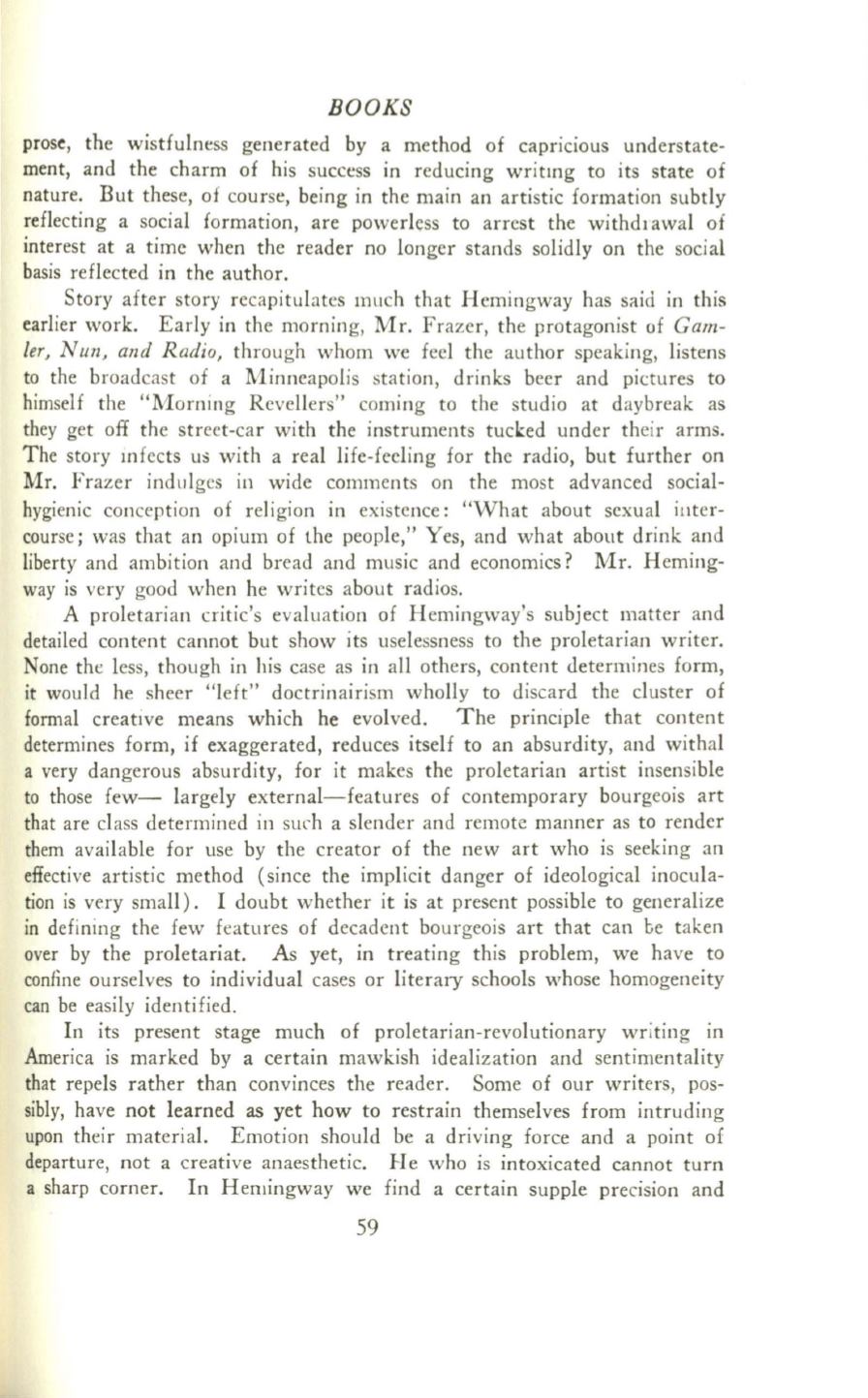
BOOKS
prose, the wistfulness generated by a method of capnclOus understate–
ment, and the charm of his success in reducing writmg to its state of
nature. But these, of course, being in the main an artistic formation subtly
reflecting a social formation, are powerless to arrest the withdrawal of
interest at a time when the reader no longer stands solidly on the social
basis reflected in the author.
Story after story recapitulates much that Hemingway has said in this
earlier work. Early in the morning, Mr. Frazer, the protagonist of
Gam–
ier, Nun, and Radio,
through whom we feci the author speaking, listens
to the broadcast of a Minneapolis station, drinks beer and pictures to
himself the "l\!Iorning Revellers" coming to the studio at daybreak as
they get off the street-car with the instruments tud::ed under their arms.
The story mfects us with a real life-feeling for the radio, but further on
Mr. Frazer indulges in wide comments on the most advanced social–
hygienic conception of religion in existence: "What about sexual illter–
course; was that an opium of the people," Yes, and what about drink and
liberty and ambition and bread and music and economics? Mr. Heming–
way is very good when he writes about radios.
A proletarian critic's evaluation of Hemingway's subject matter and
detailed content cannot but show its uselessness to the proletarian writer.
None the less, though in his case as in all others, content determines form,
it would he sheer "left" doctrinairism wholly to discard the cluster of
formal creative means which he evolved. The principle that content
determines form, if exaggerated, reduces itself to an absurdity, and withal
a very dangerous absurdity, for it makes the proletarian artist insensible
to those few- largely external-features of contemporary bourgeois art
that are class determined in such a slender and remote manner as to render
them available for use by the creator of the new art who is seeking an
effective artistic method (since the implicit danger of ideological inocula–
tion is very small) . I doubt whether it is at present possible to generalize
in defining the few features of decadent bourgeois art that can be taken
over by the proletariat. As yet, in treating this problem, we have to
connne ourselves to individual cases or literary schools whose homogeneity
can be easily identified.
In its present stage much of proletarian-revolutionary writing in
America is marked by a certain mawkish idealization and sentimentality
that repels rather than convinces the reader. Some of our writers, pos–
sibly, have not learned as yet how to restrain themselves from intruding
upon their material. Emotion should be a driving force and a point of
departure, not a creative anaesthetic. He who is intoxicated cannot turn
a sharp corner. In Hemingway we find a certain supple precision and
59


